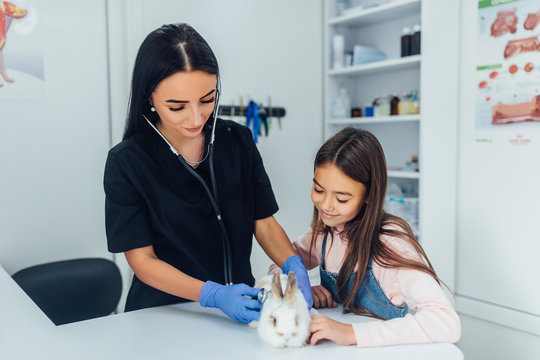As pet owners, we all want our furry friends to live long, happy, and healthy lives. But with so much conflicting information out there, it can be hard to know what steps to take to ensure optimal pet health. That’s why we’ve compiled a comprehensive guide to mastering the best pet care practices. By following these simple steps, you’ll be able to provide your pets with the best possible care and set them up for a lifetime of wellness. So whether you’re a seasoned pet owner or just starting out, read on to discover how you can give your pets the care they deserve.
Understanding Your Pet’s Nutritional Needs
Nutritional needs are a critical aspect of your pet’s health. Proper nutrition can help prevent various illnesses and keep your pet in optimal health. It’s essential to provide a well-balanced diet that meets their specific dietary requirements based on their age, weight, and breed. High-quality protein, vitamins, minerals, and healthy fats should be included in every meal.
When selecting food for your pet, it’s best to choose reputable brands with high-quality ingredients to ensure they receive the nutrients they need. Avoid food with fillers like corn or soy which do not offer any nutritional value.
Additionally, portion control is also crucial as overfeeding can lead to obesity which poses significant health risks such as diabetes and joint problems. Your veterinarian can help you determine how much food your pet should consume per day based on their individual requirements. By providing proper nutrition through appropriate feeding practices and quality food selection, you’re taking an essential step towards ensuring good overall health for your furry companion.
The Importance of Regular Exercise for Your Pet
Regular exercise is crucial for maintaining your pet’s overall health and well-being. It helps to keep their weight in check, strengthens their muscles and bones, and reduces the risk of developing certain health conditions. The amount of exercise your pet needs depends on their age, breed, and activity level. For example, a young and active dog may require several hours of exercise per day, while an older dog may only need a short walk. Cats also benefit from regular exercise, such as playing with toys or climbing on a cat tree. Make sure to provide plenty of opportunities for your pet to be active, whether it’s through daily walks, playtime, or other activities. Remember to always consult with your veterinarian before starting any new exercise routine for your pet.
Grooming Tips for a Healthy and Happy Pet
Regular grooming is essential for maintaining the health and happiness of your pet. Grooming helps to distribute natural oils throughout their coat while also removing dirt, debris, and dead hair that can lead to matting and skin irritation. For dogs with longer coats, brushing should be done daily or every other day to prevent tangles from forming. Bathing frequency depends on the breed; however, over-bathing can strip away natural oils so it’s important not to go overboard with washing. Regular nail trimming is also important as long nails can cause discomfort and even changes in gait. Additionally, cleaning your pet’s ears regularly will help prevent ear infections caused by built-up wax and debris. Grooming time also serves as an opportunity for bonding between you and your furry friend!
Preventative Care: Vaccinations and Parasite Control
Preventative care is essential to ensure your pet’s optimal health. This includes vaccinations and parasite control. Vaccinations protect your pet from infectious diseases, while parasite control prevents infestations of fleas, ticks, and worms. Your veterinarian will recommend a vaccination schedule based on your pet’s age, lifestyle, and risk factors. It’s important to keep up with these vaccinations to ensure your pet is protected. Parasite control can be achieved through regular use of flea and tick preventatives and deworming medications. Your veterinarian can recommend the best products for your pet’s needs. Regular check-ups with your veterinarian can also help detect any potential health issues early on, allowing for prompt treatment and prevention of further complications. By prioritizing preventative care, you can help keep your pet healthy and happy for years to come.
Dental Health: How to Keep Your Pet’s Teeth Clean
Brushing Your Pet’s Teeth: A Simple and Effective Way to Ensure Dental Health
Brushing your pet’s teeth is crucial for maintaining their dental health. Regular brushing can prevent the buildup of plaque and tartar, which can lead to tooth decay and gum disease. To start, introduce your pet to the toothbrush and toothpaste gradually, allowing them to sniff and taste it before beginning the brushing process. Use a soft-bristled brush and specially formulated toothpaste for pets. Brush in a circular motion, focusing on the outer surfaces of the teeth. Be sure to reward your pet with praise or a treat after each successful brushing session. Aim to brush your pet’s teeth at least twice a week for optimal dental health.
Other Ways to Promote Healthy Teeth in Pets: Diet, Chews and Toys
In addition to regular dental cleanings, there are other simple ways to promote healthy teeth for your pet. Providing a nutritious diet that is rich in essential vitamins and minerals can help keep their teeth strong. Chewing on appropriate toys and treats designed specifically for oral health can also aid in removing plaque buildup from their teeth. Look for products that have received the VOHC (Veterinary Oral Health Council) seal of approval.
Additionally, offering raw bones or natural chews such as bully sticks or deer antlers can help scrape away tartar and maintain healthy gums. Avoid giving your pet hard objects like rocks or hooves as they could cause tooth fractures or injury to their mouth
Recognizing Signs of Oral Health Issues in Pets: Importance of Regular Check-ups
Routine oral check-ups are essential in maintaining your pet’s healthy teeth and gums. Neglected dental health can lead to serious health issues such as bad breath, tooth decay, gum disease, and even systemic infections that can affect internal organs. Regular exams allow veterinarians to detect early signs of dental problems and address them promptly. Some common signs of oral health issues include difficulty chewing food or toys, bleeding from the mouth or gums, visible tartar buildup on teeth, loose or missing teeth, and changes in appetite or behavior. Don’t wait until these signs appear; schedule routine veterinary visits for your pet today!
Professional Dental Cleanings for Pets: What You Need to Know
Professional dental cleanings are important for maintaining optimal pet health. Just like humans, pets need regular dental check-ups to prevent oral diseases and keep their teeth clean. A professional cleaning involves a thorough examination of your pet’s mouth, removal of tartar buildup, polishing of the teeth, and sometimes X-rays. Anesthesia is usually required for this procedure to ensure your furry friend remains still and comfortable throughout the cleaning process.
Regular at-home brushing with pet-friendly toothpaste can help maintain good oral hygiene in between professional cleanings. Don’t neglect your pet’s dental health as it contributes significantly to their overall wellbeing.
Recognizing Signs of Illness in Your Pet
Recognizing signs of illness in your pet is essential to keeping them healthy. It’s important to watch for changes in behavior, appetite, and energy levels. Some common symptoms of illness include vomiting, diarrhea, lethargy, loss of appetite or weight loss, excessive thirst or urination, coughing or sneezing, and a change in coat quality.
If you notice any of these key signals, it’s important to take your pet to the veterinarian as soon as possible. Prompt medical attention can often mean the difference between a minor ailment and a serious condition that requires more intensive care.
In addition to watching for physical symptoms, it’s also important to pay attention to behavioral changes in your pets. If they seem more withdrawn than usual or are showing aggressive tendencies when they usually wouldn’t be that way then something might be wrong. Be sure to give your pets plenty of love and attention so that you can quickly spot any potential problems before they become major health concerns.
Creating a Safe and Comfortable Home Environment for Your Pet
Safe and Comfortable Home Environment, Pet-proofing
Creating a safe and comfortable home environment for your furry friend is crucial to their overall well-being. Besides providing them with adequate food, water, shelter, and playtime, you also need to make sure that your home is pet-friendly. One of the first things you should do when bringing a new pet home is pet-proofing. This involves removing any hazardous items such as poisonous plants, electrical cords or sharp objects that they could chew on or swallow.
Make sure there are no loose wires or exposed sockets in your house. Keep all chemicals such as cleaning agents locked away out of reach from pets. Ensure that balcony railings are secure so that small pets cannot slip through the bars.
Your pet’s sleeping area should be clean and cozy with enough space for them to stretch out comfortably. Consider purchasing a sturdy crate if you plan on leaving them alone at times during the day.
Lastly, provide toys like balls and scratching posts to keep your pet active mentally and physically entertained while preventing destructive behavior in case of anxiety or boredom.
Taking these steps will ensure that your furry companion has an enjoyable life free from harm within its loving home!
Training Tips for a Well-Behaved Pet
Basic Commands Every Pet Should Know
Basic Commands Every Pet Should Know: Start with teaching your pet the basic commands such as ‘sit’, ‘stay’, ‘come’ and ‘heel’. These commands are important for discipline and to keep your pet safe in different situations. Use treats, positive reinforcement and repetition to train your pet effectively. Teach one command at a time before moving on to the next. Consistency is key in training so ensure that you practice regularly. Once your pet has mastered these basic commands, move on to other commands relevant to their lifestyle such as ‘leave it’, ‘drop it’ or even more advanced tricks like rolling over or playing dead. Remember, consistent training leads to a well-behaved, happy and healthy pet!
Positive Reinforcement Techniques for Effective Training
Positive reinforcement techniques are key to effective training and promoting good behavior in your pet. Using rewards, such as treats or praise, for desired behaviors can encourage them to repeat those actions. It’s important to be consistent with positive reinforcement and avoid punishment-based methods that may lead to fear or aggression in your pet. Establish clear commands for common behaviors like sit, stay, and come using short phrases paired with rewards. Practice regularly and gradually increase distractions to reinforce these commands in different environments. With patience and consistency using positive reinforcement methods, you’ll see improvement in your pet’s behavior over time.
Addressing Behavioral Issues: Tips and Tricks
A well-trained pet is a happy pet, which makes for a happy owner. To achieve optimal behavior, consistent training and positive reinforcement are key. Start basic obedience training early on and gradually introduce new commands as your pet progresses. Addressing behavioral issues such as barking, biting or separation anxiety can be challenging but with patience and the right techniques it is possible to overcome them. Avoid punishing or scolding your pet, instead focus on rewarding good behavior with treats or verbal praise. Seek advice from professionals if needed and remember that every animal is unique and requires personalized attention.
Consistency is Key: Maintaining Good Behavior in Your Pet
Consistency is crucial in maintaining good behavior in your pet. Positive reinforcement is the most effective method of training and should be used consistently to encourage good behavior. Remember to reward your pet immediately after their desired action, whether it’s a treat or praise. Clear communication with your pet is also important in establishing consistent boundaries and expectations. Keep commands simple and use the same language every time to avoid confusion. Additionally, make sure everyone in your household is on board with how you’re training your pet so that there are no mixed messages being sent. With consistency and positive reinforcement, you can train your pet to have impeccable behavior in no time!
Finding the Right Veterinarian for Your Pet’s Needs
Finding the Right Veterinarian for your pet is crucial to their overall health and well-being. Look for a veterinarian who is experienced in treating your specific type of pet, whether it’s a dog, cat, bird, or reptile. Ask for recommendations from friends, family, or local pet stores.
When visiting a potential veterinarian, ask about their approach to preventative care and their availability for emergency situations. It’s also important to inquire about their fees and payment options.
Consider the location of the veterinarian’s office and their hours of operation. Will it be convenient for you to schedule appointments and pick up medications?
Lastly, trust your instincts. You should feel comfortable with your veterinarian and confident in their ability to provide the best care for your beloved pet. Don’t hesitate to switch veterinarians if you feel like it’s not the right fit. Your pet’s health is too important to settle for anything less than the best veterinary care available.
In conclusion, mastering the best pet care requires a combination of proper nutrition, regular exercise, grooming, preventative care, dental health, recognizing signs of illness, creating a safe home environment, training, and finding the right veterinarian. By following these simple steps, you can ensure optimal health and happiness for your furry friend. Remember to always prioritize your pet’s well-being and seek professional help when needed.
If you’re looking for high-quality pet care products and supplies, visit our shop today. We offer a wide range of items to help you take the best possible care of your beloved pet. From nutritious food to fun toys and grooming tools, we have everything you need to keep your furry friend healthy and happy. Don’t wait – start shopping now!
FAQ
Q: Who provides the best pet care services?
A: Professional pet care providers offer the best services for your furry friends.
Q: What are the best pet care practices?
A: Regular exercise, a healthy diet, and routine check-ups are essential for optimal pet care.
Q: How can I find the best pet care near me?
A: Search online for local pet care providers and read reviews from their previous clients.
Q: Who can I trust to take care of my pet while I’m away?
A: Trusted pet sitters or boarding facilities with good reputations are the best options.
Q: What if I can’t afford the best pet care services?
A: Look for affordable options such as community pet clinics or low-cost pet care programs.
Q: How can I ensure my pet receives the best care possible?
A: Stay informed about your pet’s health and behavior, and prioritize their well-being above all else.




